Poached from under the noses of Barcelona last summer, the hype surrounding Japanese international Takefusa Kubo was substantial when he signed for Real Madrid. After pre-season, he was loaned out to RCD Mallorca, one of La Liga’s newly promoted teams, to help assure that he gained regular game time as he develops and pushes for a role in the Real Madrid team.
It would be fair to say that it has been a somewhat stop-start year for him on the island. While there have been flashes of his talent, he has equally struggled to show what he is capable of consistently in a totally different tactical set-up. His loan has been one of many that has led to criticism of how Real Madrid handle their loans of promising young players, but does he have what it takes to contribute to the Real Madrid squad next season or will he be again forced out on loan?
In this scout report, we will provide a tactical analysis of Kubo at Mallorca to see how he could fit into Zinedine Zidane’s Real Madrid team after his loan spell ends. The analysis will consider how he fits into the tactics of Vicente Moreno’s side and will consider his statistics among other elements to assess his performances in La Liga and the Copa del Rey.
His role
Before delving into an in-depth tactical analysis, perhaps the first point to consider when analysing Kubo’s form this season has been his irregular game time. With 25 appearances for Mallorca, just 14 of them have been starts and he has completed the full 90 minutes on 10 occasions. As such, he has struggled at times this season to have a fixed and consistent role. This is a factor which has had a consequent impact on his performance, as will be considered later on in this scout report.
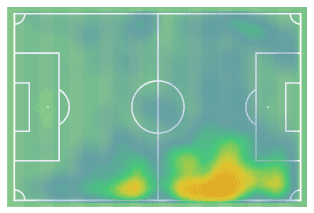
When deployed, Kubo has been used on both the right and left flanks this season, primarily on the right, as can be seen in his heat map. Here, he will stick to wide areas and only really comes into central positions should a shooting opportunity arise. This width is a crucial element of Mallorca’s plan, particularly when he is most frequently used in games when Moreno looks to spread play and stretch the opposition.
Equally, he is not the most defensively active of wingers. Whilst he does track back, he will often hold off dropping too deep and instead prefers to offer a counter-attacking outlet. This reflects his general positioning for Mallorca, often being further up the field as Mallorca push on their wide players. Typically in a 4-4-2, this has at times varied to a 4-2-3-1 and can even resemble a 4-3-3 when the wide men push so high up the field.
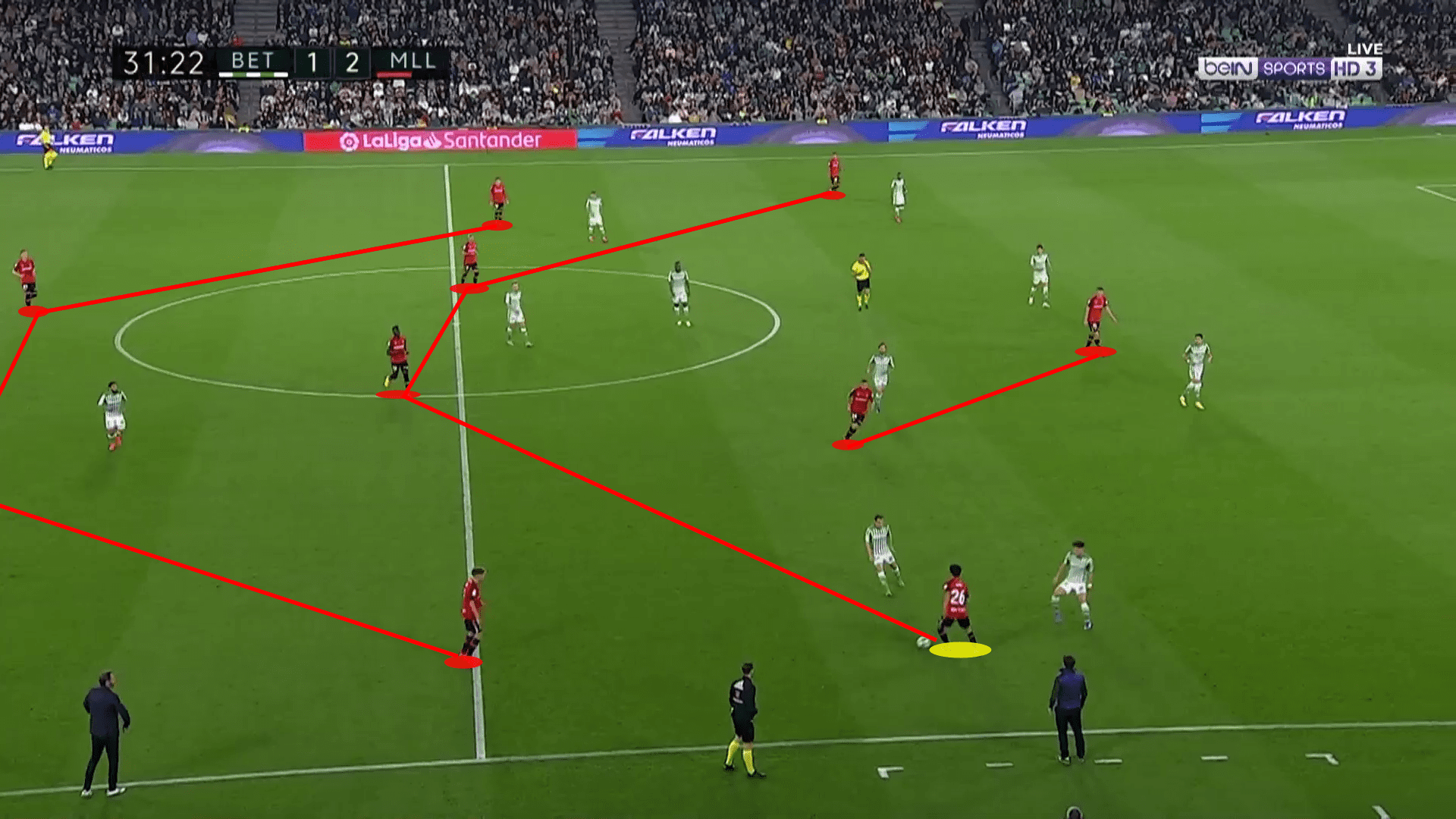
This is perhaps part of an explanation as to why much of his role this season has been to be used as an impact player, using his pace and drive to attack the flanks in advanced positions. Kubo’s introduction is often one of Moreno’s first options whenever Mallorca are chasing a game and are in need of a goal and as this analysis will show, it is easy to see why.
Direct approach
Only four men have completed more dribbles in La Liga per 90 minutes this season than Kubo. One of them is Lionel Messi. Another two are his potential team-mates, Vinícius Junior and Eden Hazard. As such, it would be fair to say that Kubo’s approach, directly looking to get at defenders and take them on, averaging a dribble just over every 10 minutes, puts him in good stead for a role at Real Madrid.
His pace and gifted technical ability means that he is capable of taking on almost any defender. In fact, his dribble success rate of 55.7% surpasses Vinícius’s 38.8 and is close to Hazard’s 55.9%. This allows him to regularly get to the byline and then look to cut back the ball into the box in order to create goalscoring opportunities.
It is also essential on the counter, as seen below, as it helps Mallorca to carry the ball forwards at speed by using his dribbling skills. Much like Zidane likes his team to give the ball to dribblers like Hazard, Vinícius or Fede Valverde to transition, Kubo could too benefit from this approach and offer value to the French coach.
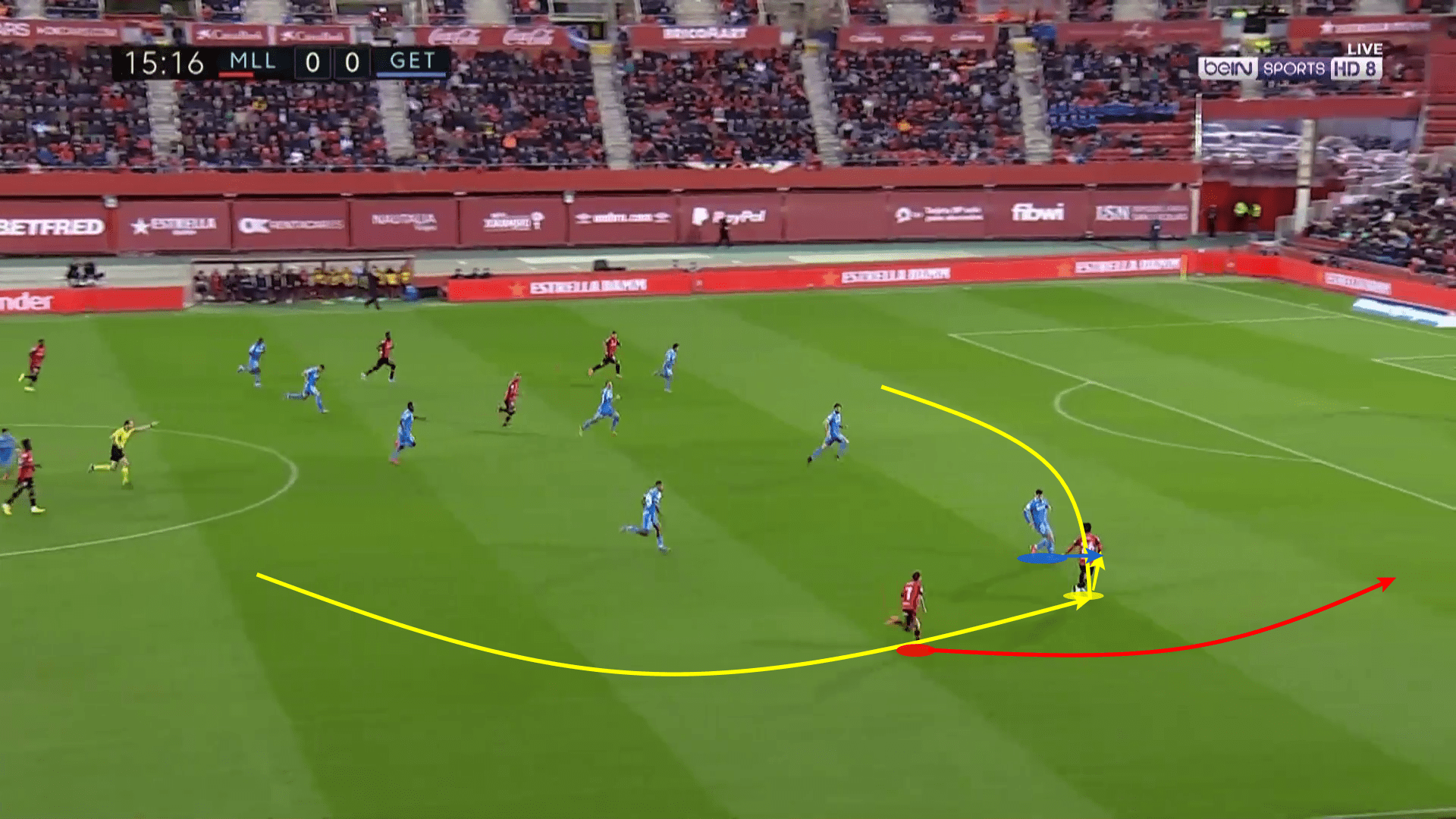
However, critics have argued that in the case of Kubo and his dribbling, you certainly can have too much of a good thing. This can be seen in this example against Getafe. With acres of space to run into on the counter, Kubo could play a cross-field pass, wait for the overlap or continue his run but instead looks to take on a man and cut inside when there is no need to. In this case, dribbling further rather than taking on a defender, would have been the more productive outcome.
Another time where his dribbling can go wrong, and one that is the case regularly is that he holds off taking a man on, waiting for support as he relies upon team-mates who are not operating at the same speed as him. Too frequently he is hesitant or slow to take men on and instead finds himself giving defenders time to track back, adjust and set themselves.
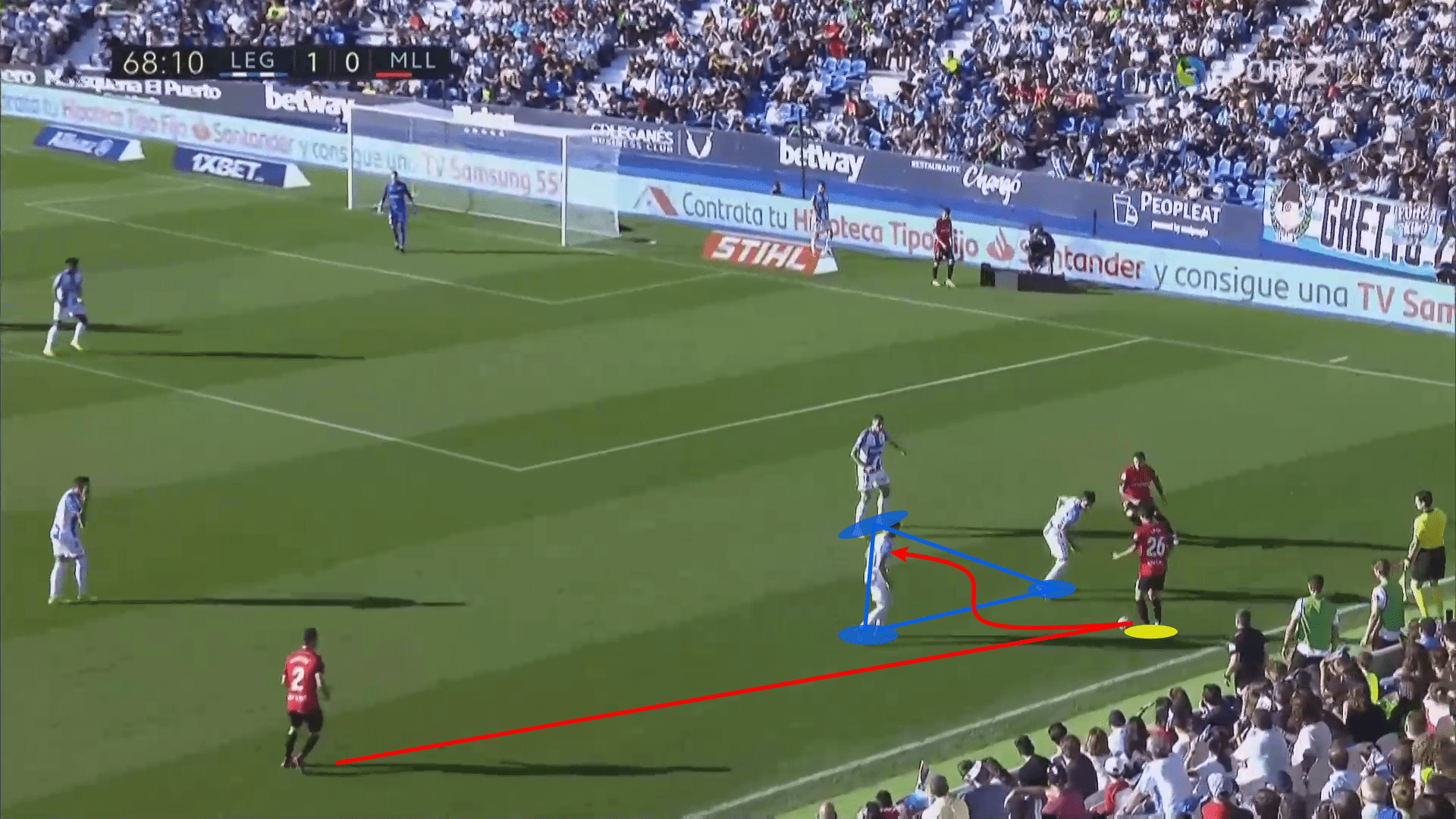
Take this example against Leganés. With his team 1-0 in a crucial encounter and surrounded by defenders, he makes the mistake of putting his foot on the ball and killing play dead. The result is that the underlapping run from midfielder Aleix Feibas is rendered useless as he finds himself offside, while full-back Joan Sastre is showing. With three men blocking his passing options and providing cover for any take-on he may win, Leganés are leaving him with no choice but to play the pass back. Instead though, after some fancy footwork, Kubo drives straight into the three-man trap and immediately loses possession.
Such examples of naivety reflect that whilst Kubo undoubtedly possesses great potential in this regard and has excellent technical skills, he has some work to do as he gains greater experience of when to take advantage of those abilities.
Goal threat
Arguably the biggest area where Kubo should be expected to improve is in his offensive threat in terms of goals. With just 2.23 xG this season, as such an offensive minded winger he must be getting himself into more dangerous goalscoring opportunities more frequently in order to pose a real threat.
This may come down to his style when it comes to efforts on goal. While he has registered 39 efforts on goal this season, more than half, 22, have come from outside the penalty area. Of those, only four inside the box have been on target (a 23.5% accuracy rate), compared to 10 from outside (a 45.4% accuracy rate). .
All three of his goals this season have come in very similar approaches. In a style perhaps most comparable to Philippe Coutinho, especially in his role as a winger at Liverpool, he will always look to drift inside and then take a touch or two to create more space for himself before unleashing an effort into the corner of the net. His goals against Villarreal and Eibar were almost identical in this sense, cutting in from the left with his run, waiting for the defenders to close down on him before taking a touch to find the space and then curling in.
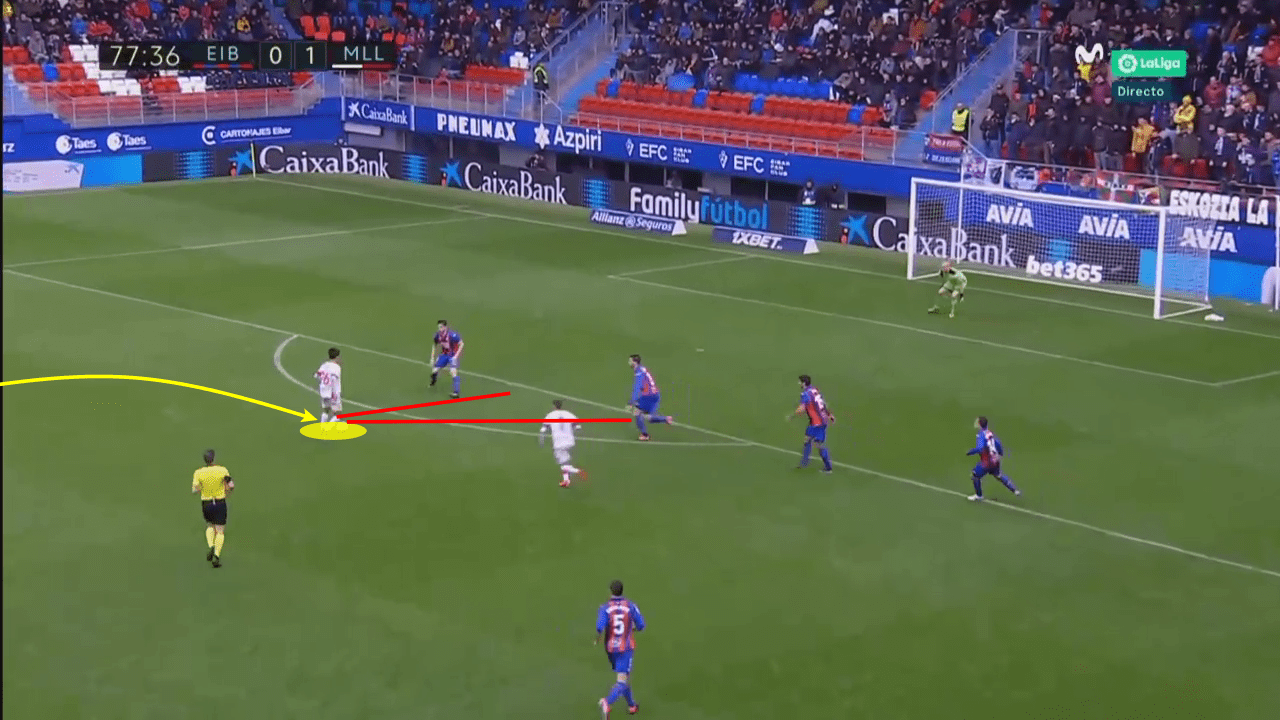
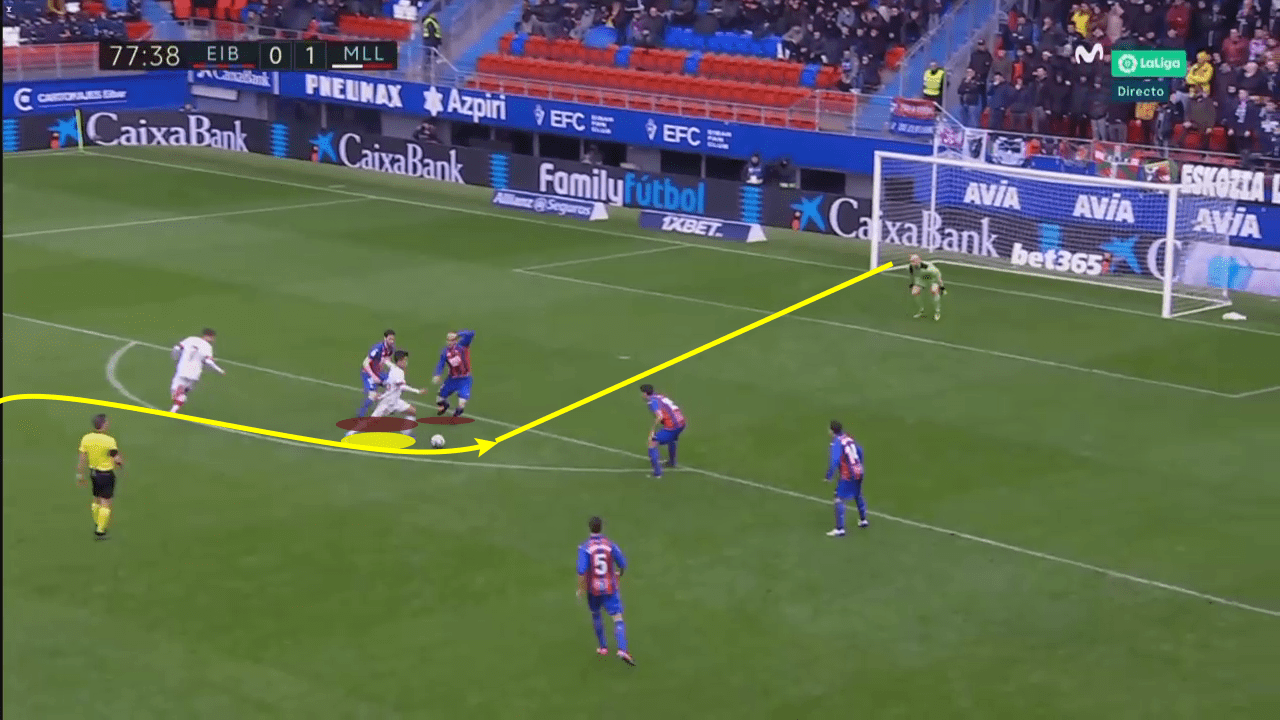
Even against Real Betis, his only goal from inside the box this season, it was again a similar approach, this time carrying the ball but then cutting inside to take the touch to open up his body and place the ball into the bottom corner from the very edge of the box. It is an approach which has worked well.
This area for improvement will be one that Zidane may feel he can help Kubo with. There is little doubting his potential or ability, given that even this season with just three goals, he is surpassing his xG of 2.23. Across his career, his goal return of 14 compared to an xG of 8.98 is even more impressive. With this potential and given the nature of his goals this season, Zidane will feel that there is potential to get more out of him.
This, alongside teaching him to act as more of a poacher, getting into the far post for scraps and deliveries into the box just as Zidane looks to nurture with Vinícius and Rodrygo Goes, will be essential. Should Kubo add these elements to his game, he could be a major goalscoring threat.
Width
Rather than regularly finding himself in those central positions looking to score, Kubo is far more regularly found out wide. He will typically stick to the byline and look to stretch the game as much as possible, similar in many ways to some of Real Madrid’s wingers who do so while linking up with full-backs. This way Kubo provides more space for his team-mates but also for himself to run into.
This is particularly important when on the counter-attack. Against strong sides where Mallorca are regularly pinned back, Kubo is a fundamental outlet as Mallorca look to break rapidly. This was never more true than at the Camp Nou facing Barcelona, where Kubo actually produced one of his best performances in a Mallorca shirt, thanks in part to this role.
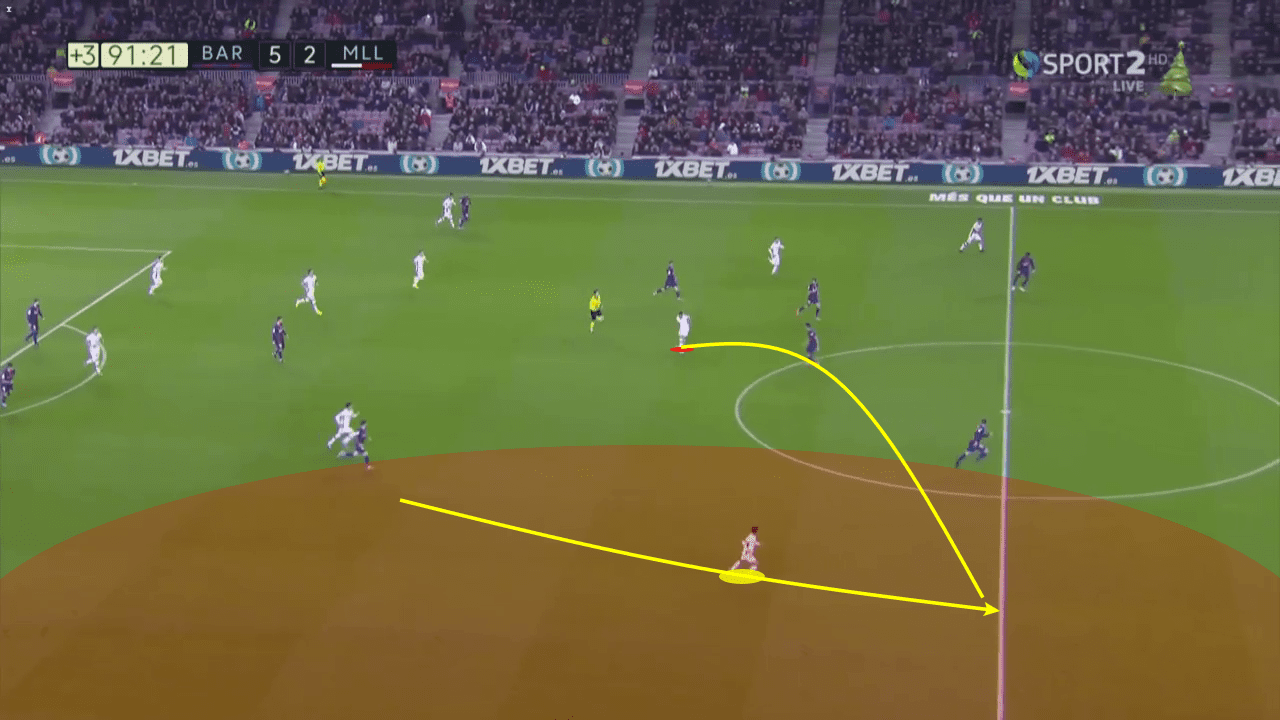
By positioning himself high and wide, as soon as Mallorca won the ball and looked to counter, Kubo would look to exploit the space left in behind which Junior Firpo left time and time again. In doing so, Kubo’s pace caused real problems for the Barcelona defence as he could move forwards and carry the ball quicker than Clement Lenglet on the left side of Barcelona’s central defensive pairing. Posing such an imminent attacking threat on the counter, he stuck wide and would look to drag Lenglet with him to open space for Budimir or Dani Rodríguez through the middle in a one-on-one situation with Gerard Piqué.
Equally when in possession, Kubo will look to use his pace to make the most of the wide space available. He does so through quick one-two passing movements and a give and go approach which is not regularly used in this Mallorca team, who do not possess the pace of a team like Real Madrid. In this regard, his way of sticking to the byline allows him to avoid being slowed down by the movements of his team-mates, instead looking to burst down the flank.
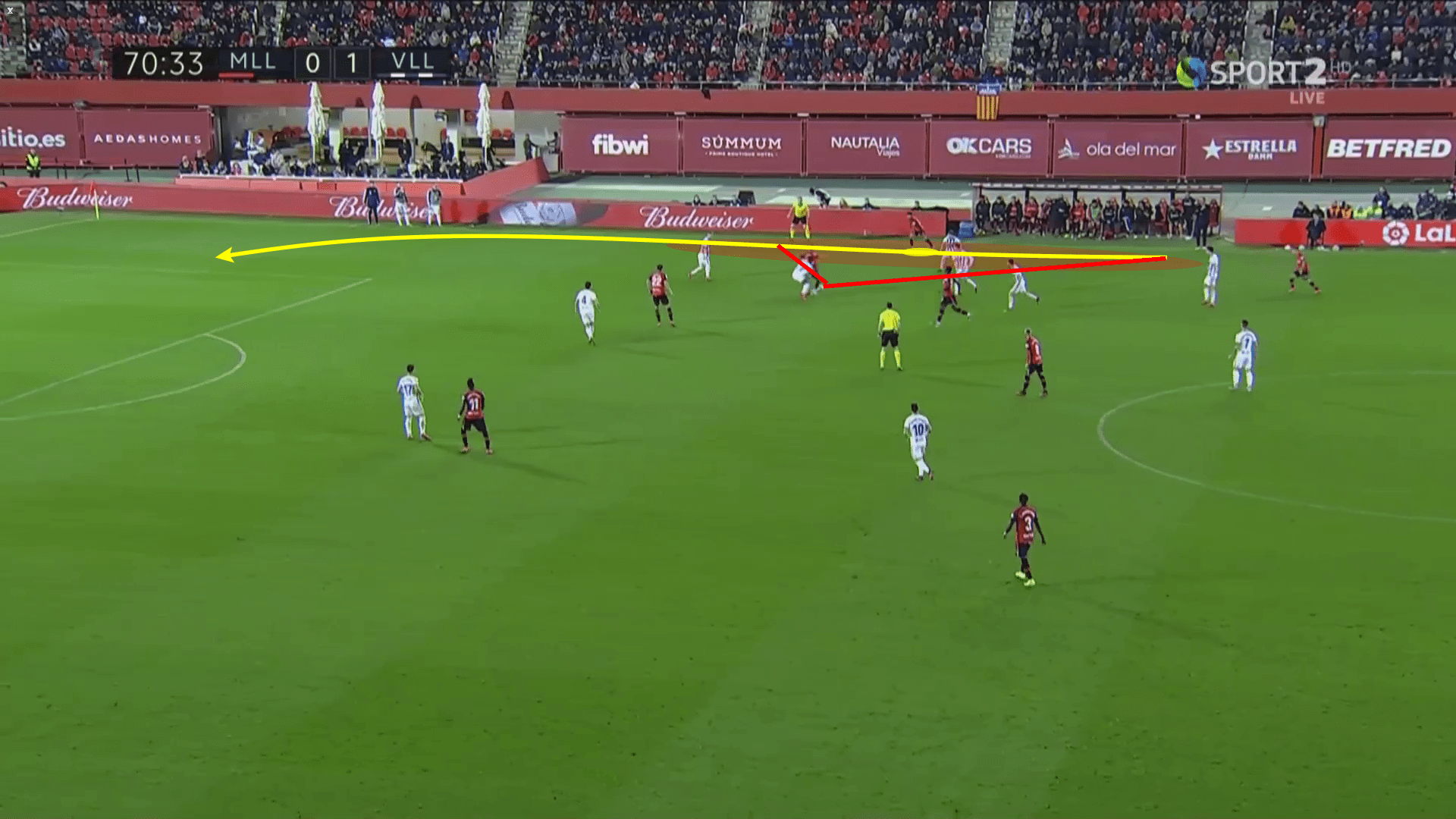
In doing so, we are again witnessing this direct approach from the Japanese international as he looks to transition into an offensive phase and break into the final third. These explosive bursts of pace are limited to the wings almost entirely, with Kubo clearly more comfortable looking to beat men for pace.
In this regard, he has progressed the ball 55.28 metres this season with the ball at his feet, almost entirely in wide positions. This is a particularly impressive stat, inside the top 10 among players under the age of 21 in La Liga, given that it places him alongside the likes of Ferrán Torres, actually surpassing the Valencia winger when taking into account the amount of ground covered per minutes played.
Creativity
One area where improvements must be demanded of Kubo is in his end product in terms of creativity. He has shown flashes of brilliance this season, but with only two assists and an albeit better 3.91 xA, there is still a sense that he could do more despite the fact that only Salva Sevilla has recorded a higher xA with 4.6 this season.
The reason for that is that Kubo’s movement and directness can make him predictable and easy to defend against. Time and time again, he will take men on and look to cut to the byline before attempting a delivery. One of his best assists of the campaign actually came when he mixed that approach up against Getafe. Facing two men in blue, he saw no path through and instead surprised Marc Cucurella by cutting back on himself and delivering a toe-poked cross with just two touches onto the head of Budimir who duly converted from 12 yards out.
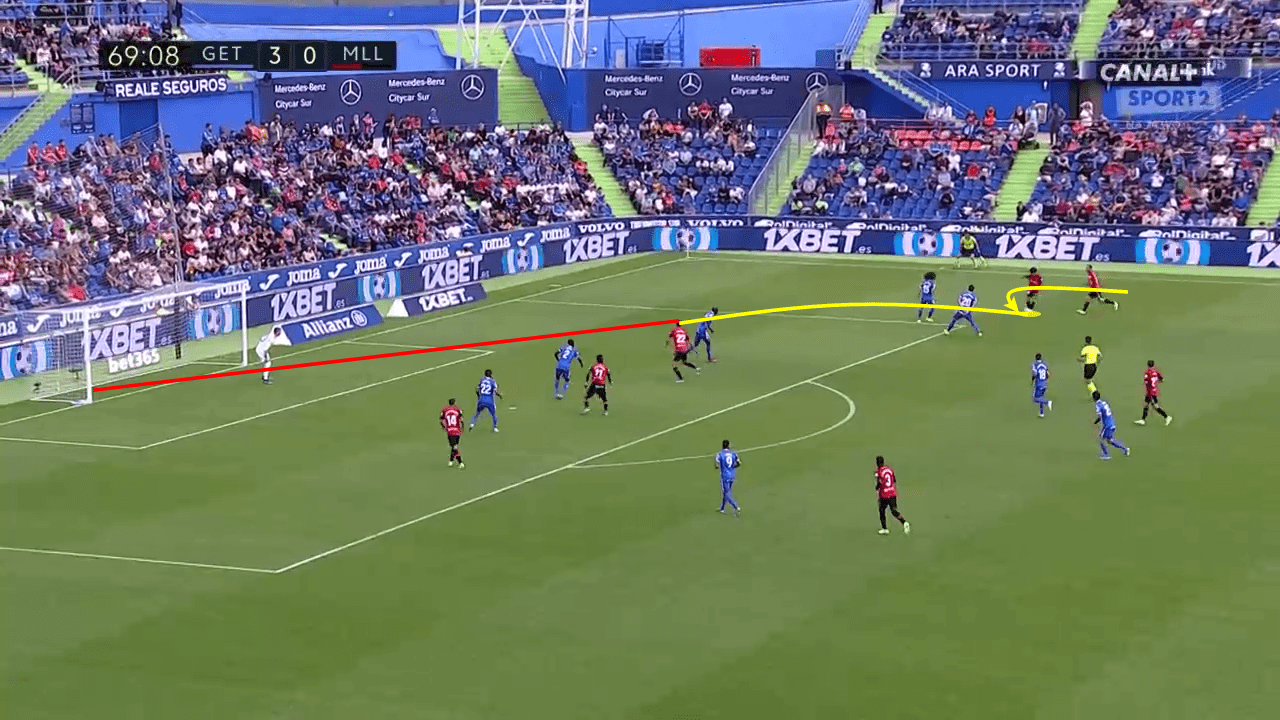
This unpredictability to his game makes him a far greater threat and helps him to produce even up against quick full-backs like Cucurella. As the season has gone on and perhaps as Kubo has felt more in his comfort zone, he has done this less and less. Whilst he is effective at taking men on and carrying the ball, bringing back a little more creativity and dynamism to surprise defenders would be the kind of feature to his game that may catch the eye in Madrid.
Equally, his decision making in the final third could improve. Despite the fact that he has made 51 crosses this season, only that effort against Getafe has ended in a goal. His preference to take men on can mean that it allows defenders to get back and consequently this crowds the box more and makes it more unlikely that his cross will be completed.
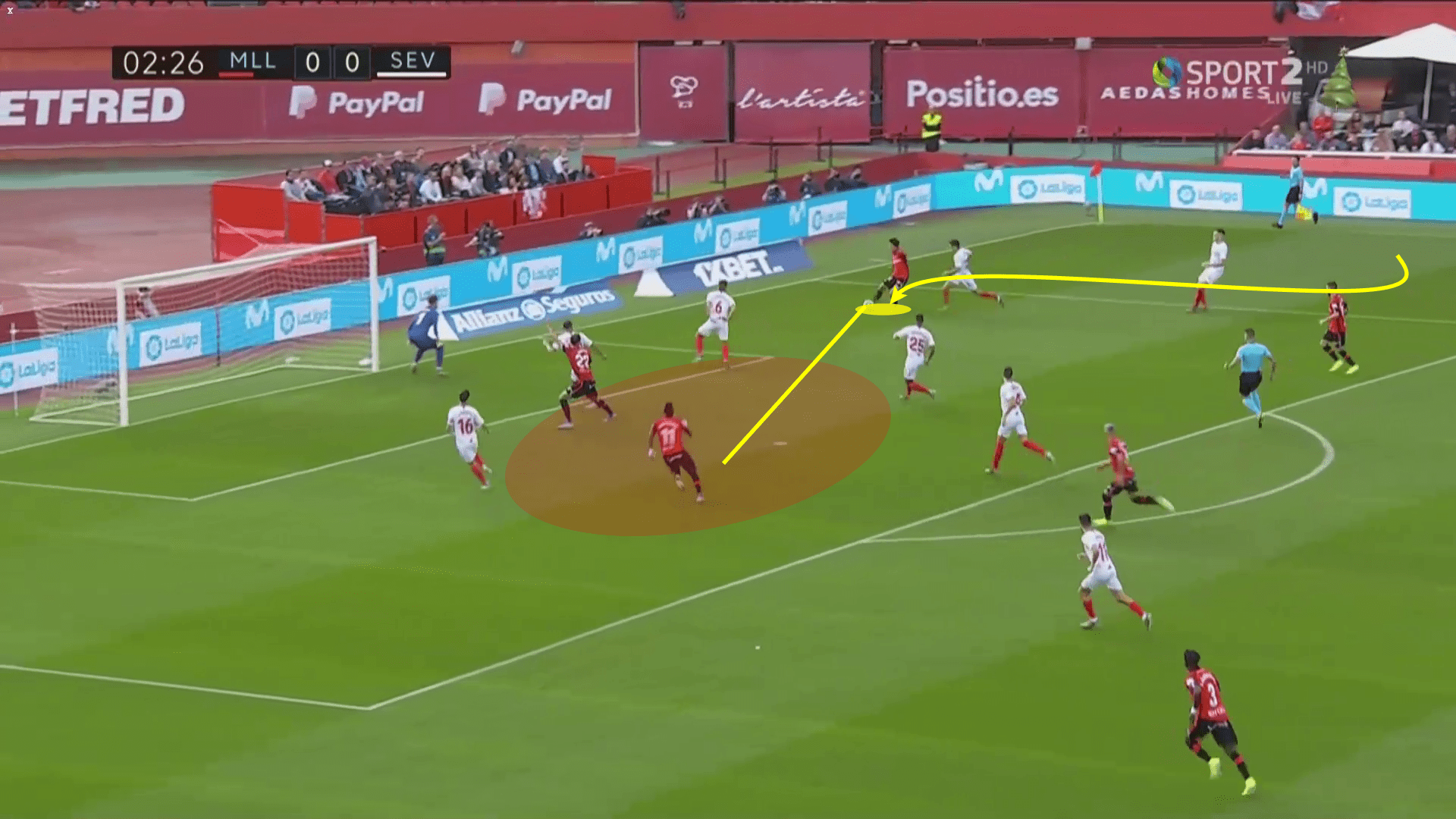
His most threatening crosses often come when he bursts past a defender and looks to cut back to them, such as this chance against Sevilla shows. Here, the rapid move allowed him to find Lago Junior in acres of space right in the heart of the penalty area and it was a chance that his team-mate really should have converted. Such rapid manoeuvres are where Kubo presents the greatest threat and can identify gaps in rival defences.
Consistency
Another criticism of Kubo this season has been that he has failed to establish a consistent run of form. This may well run into a vicious circle of failing to gain a regular run in the team and his struggle to gain form. Equally, for Zidane this would be a concern as he would not be guaranteed a run in the Real Madrid team but would be required to perform on the rare occasions when he was given an opportunity.
To some extent, this could be simplified by considering his confidence with his dribbling. When confident, Kubo can be seen taking on opponents and completing successful dribbles, while at other times he is more reluctant to do so. Below, his graph of dribbles completed per match throughout the campaign can be seen to demonstrate how he has struggled at times. With a success rate which is unpredictable, it reflects his inconsistency on the field.

What is more concerning is that it extends to his passing where his influence can be substantial in one game and drop significantly in the next. This reflects a greater issue than mere confidence and also reflects the way in which Kubo can make the difference for Mallorca in one game and then be non-existent in the next.

At Real Madrid, as will be touched upon in the next section of this scout report, competition for places will likely mean that if Kubo cannot consistently produce the goods, he will likely struggle to establish himself.
Rivals & development
While it is clear that Kubo is developing well, his biggest obstacle at the Bernabéu undoubtedly lies in those that are ahead of him in the pecking order. The current crisis may mean that his chances of remaining in Madrid are increased, with the club less likely to shift unwanted players and possibly struggling to find the right deals. However, given his position on the wings, it is one of the areas where Real Madrid are perhaps best stocked.
When looking solely at Kubo’s preferred position on the right, he can at least count on Lucas Vázquez, Gareth Bale, Rodrygo Goes, Vinícius Junior and the returning Marco Asensio for competition. Given the almost guaranteed starting spots for Karim Benzema and Eden Hazard in attack, all of these players fighting for one spot and acting as cover is a luxury which may prevent Kubo from having a role to play.
Looking at his figures for this season, it is easy to see why. The only one of his competitors to have goal contribution stats anything like his own is Lucas Vázquez, a favourite of Zidane. In his case, his work-rate and defensive contribution compensate for the lack of goal contribution, that being the case alongside the fact that his xA per 90 minutes is actually minimally higher than that of Kubo.
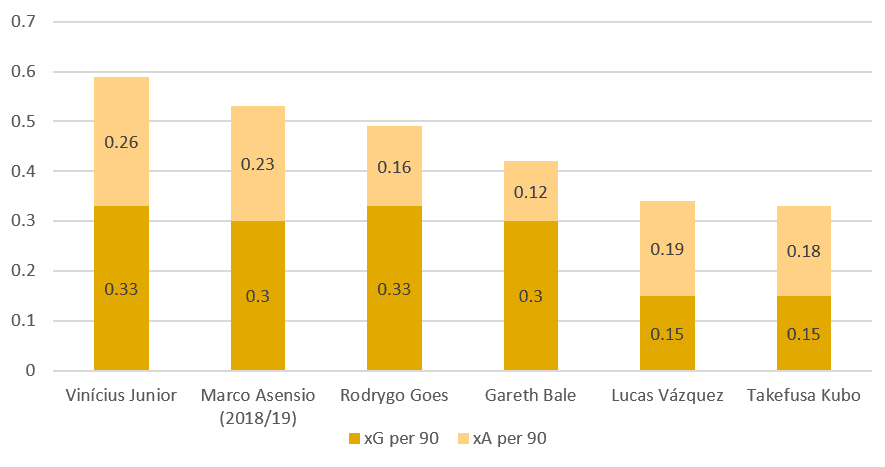
It’s true that being judged upon playing for Mallorca, rather than Real Madrid, may not help him in this comparison, but Kubo is still far from a prolific goalscorer or assister for his side. A promising talent he may be, but unlike the likes of Martin Ødegaard, he has not proven himself beyond all doubt by standing out whilst on loan.
However, in Zidane’s system it is clear that wingers offer far more than simply attacking output. In fact, one of the most crucial aspects of his team’s play is in delivering crosses into the box from wide areas. Only Sevilla have crossed the ball more than Real Madrid this season, with 28.7% more crosses than Mallorca, and as such Kubo’s crossing ability will be a key factor in Zidane’s consideration of the winger’s future.
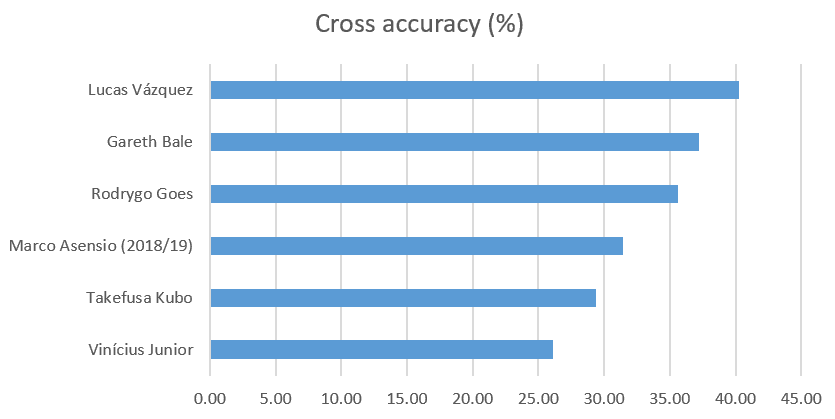
Again here, we see that Kubo is not exactly a stand-out figure. In Budimir, he has a target man in the box whose movement is impressive, much like Benzema. Yet, his cross accuracy is actually among the lowest of all of the players competing in his position. Here again, we see why Zidane may well prefer Vázquez to Kubo, with the only player to show a worse cross accuracy ratio being Vinícius, who has a far superior goal contribution.
As such, it is fair to say that Kubo would likely only play a back-up role if he were to stay at the Bernabéu, purely due to the strength of the competition. Much like Ødegaard before him, this may be a case of biding time with several loan spells to build up his profile before doing enough to earn a spot in the side.
Conclusion
If there has ever been a player who demonstrates raw potential, but very much still raw, it is Kubo. The Japanese international has shown talent and potential, particularly in his finishing and dribbling abilities where he ranks well among La Liga’s best, but he is too often let down by his inconsistencies and poor decision making.
Zidane has made it a project of his to develop such young talents in his second spell at the club and Kubo is a promising one to watch out for. 2020/21 may well come just too soon for him though. At Mallorca he has impressed, but more in flashes than consistently. A more appropriate loan move, suited to his style and offering guaranteed regular playing time, must be the target for him to continue his development.
With plenty of competition at the Bernabéu, Kubo will have his work cut out in the long-term. His ability to already compete with some of those rivals is a promising sign of what he could go on to achieve, but more time will be required before he can be expected to make a real impact on Zidane’s squad.

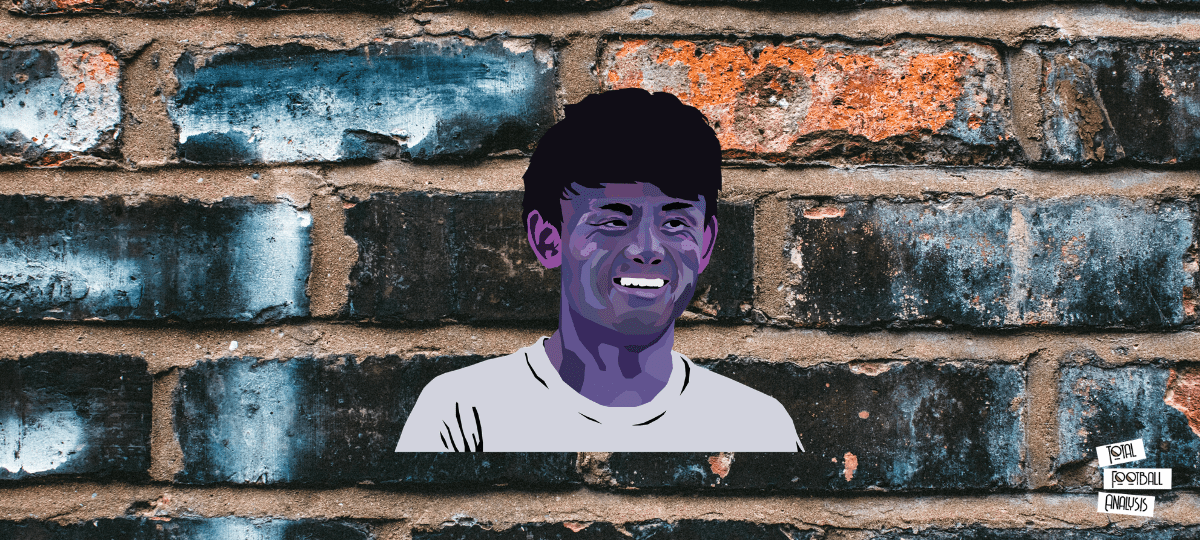



Comments